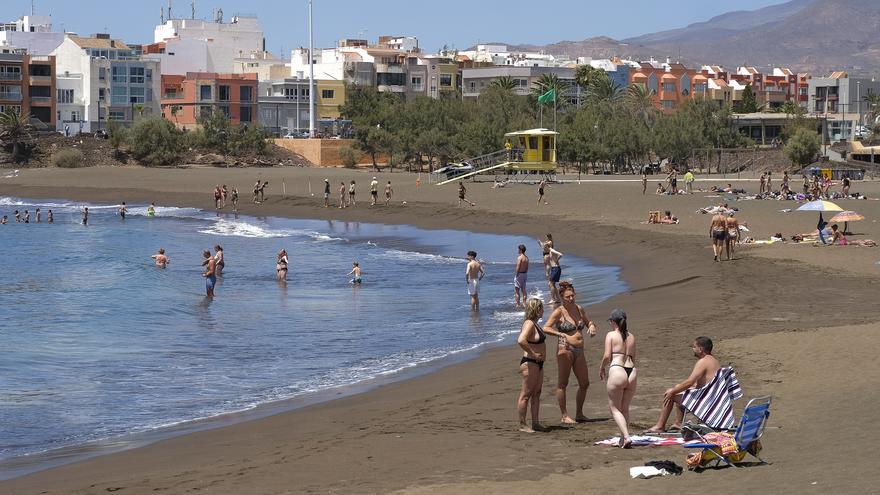
The rise in sea levels caused by climate change will already affect the entire coastline of the Canary Islands by 2030 and could deprive the islands of between 48% and 80% of their beaches by the end of the century, depending on how greenhouse gas emissions evolve. This is the warning issued by Greenpeace in the report “Coastal Crisis 2024. Analysis of the coastal situation in the face of the risks of the climate emergency”, presented this Tuesday.
In a statement, the environmental group explains that risks such as excessive urbanization and infrastructure, pollution, the construction of artificial barriers and burying of ravines “create imbalances that result in the retreat and loss of beaches”, and with them, their protective function. According to forecasts by NASA, highlights Greenpeace, the rise in sea level will cause the loss of beaches along the entire coastline, as it is estimated that for every centimeter of sea level rise, the coast will retreat one meter.
In this report, environmentalists warn that in the short term, by 2030, the islands of La Graciosa, LanzaroteFuerteventuraGran CanariaLa Gomera, and La Palma will see their entire coastline affected by the rise in sea level. In Tenerife, half of the north of the island will escape this effect, but the rise in sea level will also cause problems in the southern municipalities as early as 2030. According to Greenpeace’s estimates, around 48% of the surface area of Canarian beaches will be lost with the sea level rise towards the end of the century in a scenario of low emissions and up to 80% if high emissions are maintained.
The European Environment Agency has warned of another danger, known as the “lethal trio”: the increase in sea temperature, water acidification due to decreasing oxygen levels and pollution. All of this, adds Greenpeace, has an impact on biodiversity and marine ecosystems, as well as on fishing. Greenpeace points to mass tourism as the cause of the destruction of the Canary coastline and cites examples such as projects to build a hotel in La Tejita and a residential development in Puertito de Adeje, both in Tenerife, and the situation of the Riu Oliva Beach hotel, built on the Dunes of Corralejo in Fuerteventura.
In addition to this, pollution from discharges in the islands is a problem, as according to Greenpeace, 72% of the discharge points into the sea in the Canary Islands are not authorized and, in some areas such as El Médano in Tenerife, there is no sewage treatment system at all, causing serious infections in bathers. The excess of plastics also affects the waters around the Canaries. It is estimated that there are at least 50 million particles of microplastics per square kilometer of ocean around the islands, distributed from the surface to depths of over 1,000 meters, forming a one-kilometer thick curtain that surrounds and contaminates.
The three beaches with the highest presence of microplastics are Lambra (La Graciosa), el Porís (Tenerife), and Arenas Blancas (El Hierro). Greenpeace believes that to remedy the situation, it is necessary to implement ambitious policies to reduce greenhouse gas emissions, curb mass tourism with flight and cruise limitations, implement eco-taxes, prevent the construction of urban infrastructures that create artificial barriers, and promote scientific research.
















